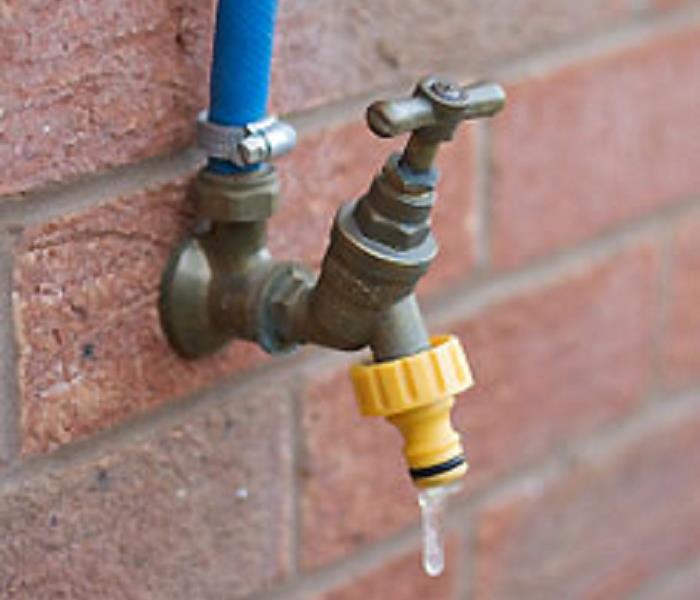Be Careful Turning on the Water!
3/10/2016 (Permalink)
Do you have a frozen sillcock?
The weather forecast is calling for much warmer days. Spring is on the horizon! Clean the gutters! Hook up the hose and wash the car! But wait; if you turn on the spigot and notice that there is not as much pressure in the hose as you remember, you might have a frozen sillcock. Immediately turn off the faucet and go to where the water comes out of the house. In most cases, this is your basement. Check to see if the ceiling, wall or floor is wet. If so, you may have a frozen sillcock. Investigate quickly in order to avoid significant damage to your home.
How does a frozen sillcock happen?
As shown in the picture below, the tube between the spigot on the outside of your house and the water shut-off valve still has water in it when the temperature outside drops below freezing. This causes the water to freeze and crack the tube. Because the crack in the tube is after the water shut-off valve, there is no water running through the tube until you use the outside spigot in the spring.
What can cause a frozen sillcock?
- Not removing garden hose before cold weather sets in
Improper installation (angle of the sillcock)
Slow drips creating a frozen sillcock
Shifting of the house/foundation
Signs that you have a frozen sillcock
- Low pressure in garden hose
Visibly wet ceiling, walls, and/or floor
How to avoid frozen sillcocks
In the spring, keep in mind that although the daytime temperature is warm, the nighttime temperature can still dip to freezing or below. When finished with daytime use, disconnect all hoses from house until the last freeze has occurred. In the fall before cold weather sets in, be sure to take the basic precautions to protect sillcocks from freezing: disconnect any garden hoses, close indoor shutoff valves if available, and open sillcocks to drain any trapped water. You can also invest in frost free sillcocks. These special frost proof sillcocks are designed to withstand colder weather, essentially by having a water shut-off valve inside your house. This helps to prevent any water left in the outer portion of the sillcock from freezing.





 24/7 Emergency Service
24/7 Emergency Service
